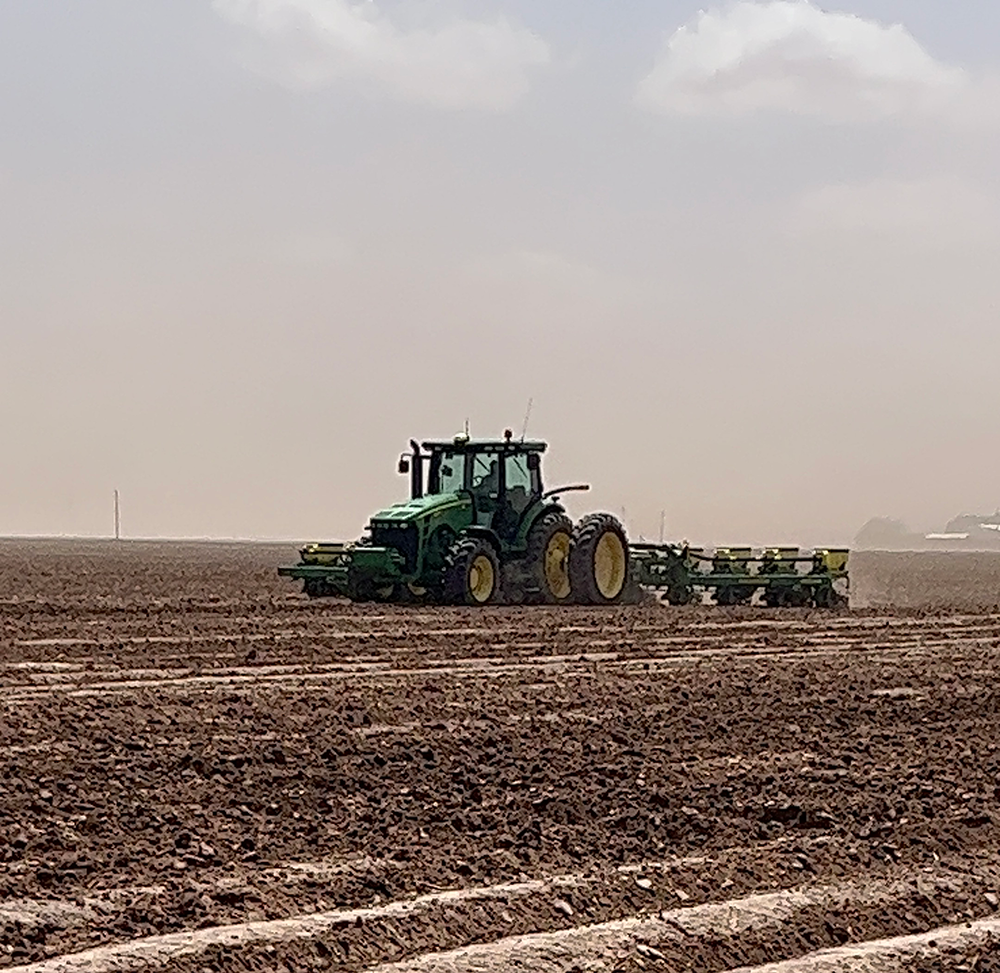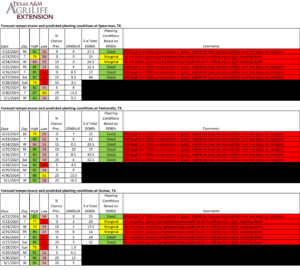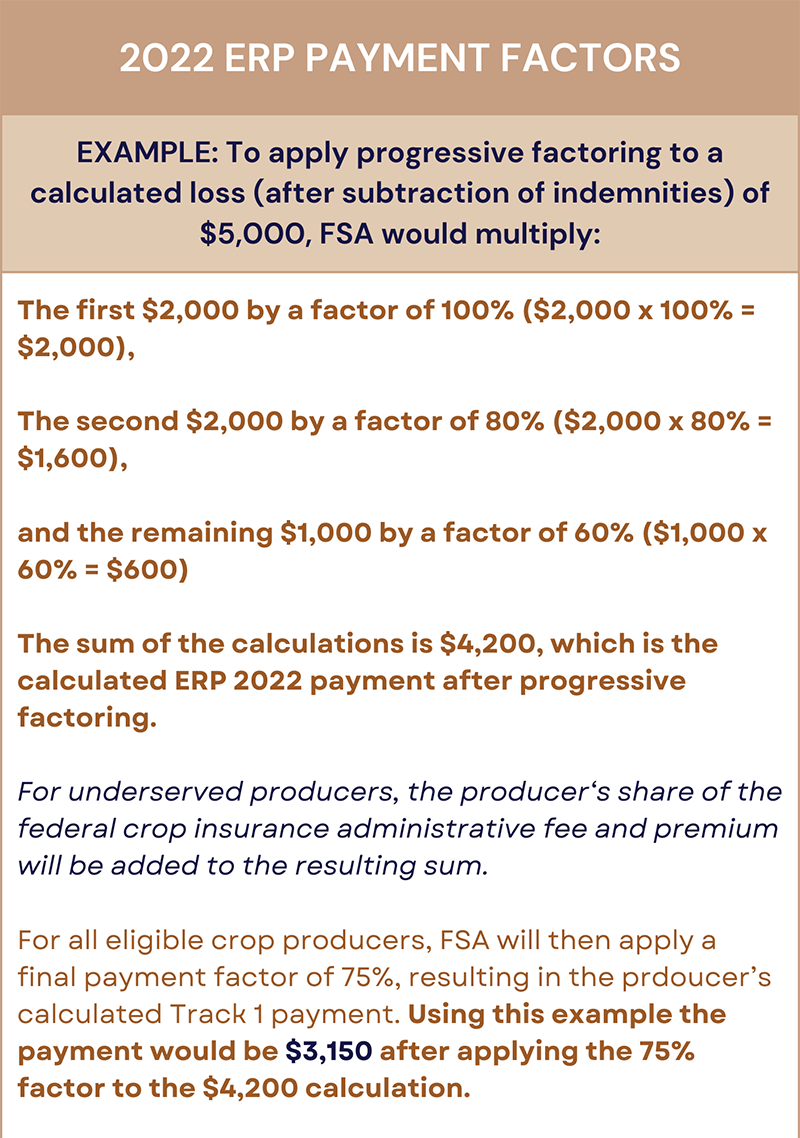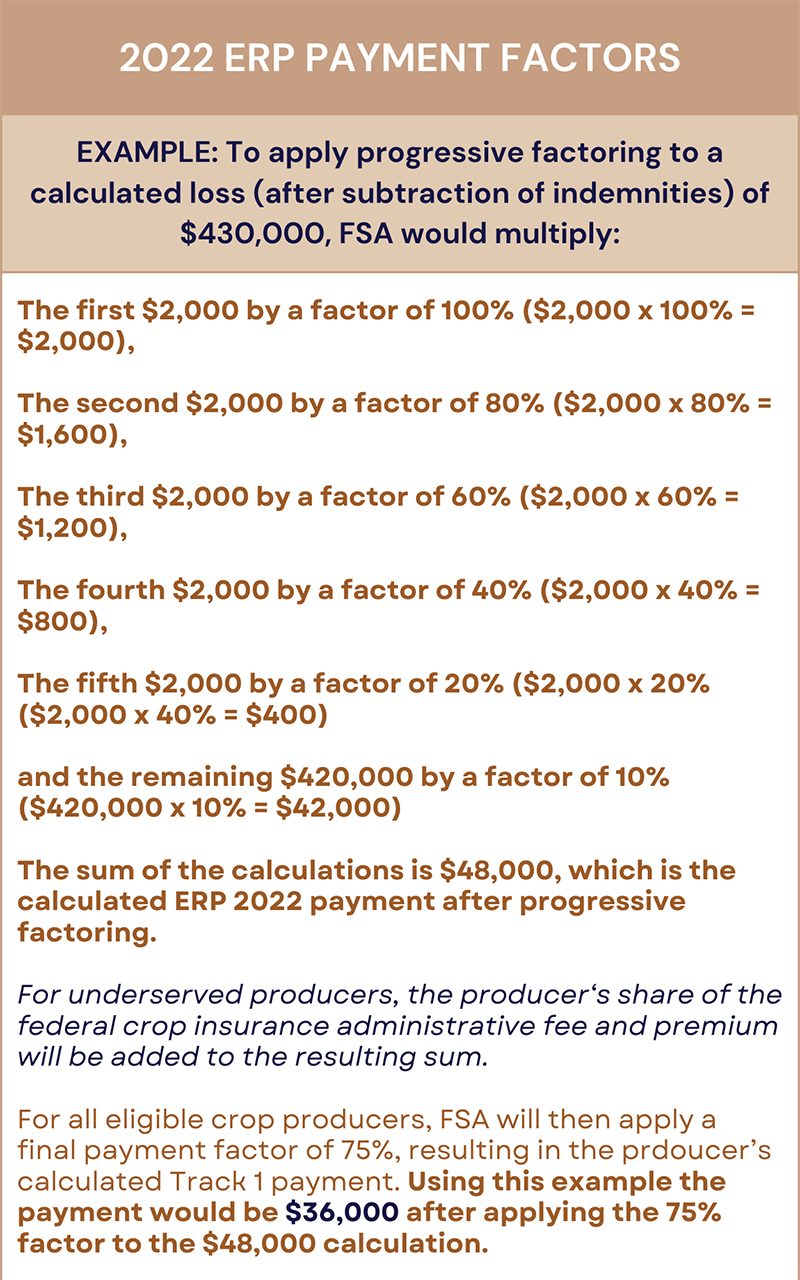
Welcome to the April 26, 2024 issue of Cotton News, a service provided by Plains Cotton Growers Inc. for the cotton industry in the Texas High Plains and beyond.
Texas High Plains Planting Conditions Forecast
By Ken Legé , Texas A&M AgriLife Cotton Extension Specialist, Lubbock Center
It is that time of year to look at planting conditions — considering moisture, air and soil temperatures, and planting capacities to determine planting start dates.
We will cover two planting conditions forecasts, each with 3 specific locations. They both show the high and low temperatures, as well as precipitation forecast percentage. I have calculated the DD60s for each day, and a 5-d DD60 accumulation total for the next five days. I’ve added some commentary to help producers plan planting operations. Most comments consider field soil moisture and soil temperatures.
2024 TX Panhandle Planting Conditions Forecast – April 22, 2024
Locations for this forecast include the following:
- Spearman, Texas
- Panhandle, Texas
- Dumas, Texas
For all three locations, my commentary is the same: Although forecast highs for the next few days are generally warmer than average, the lows predicted for the next few days pose some risk for chilling injury and/or seedling death. I recommend waiting for warmer temperatures.
Soil temperatures are in the upper 50s to lower 60s in the region.
Note that planting date data suggests April plantings are inconsistent with regard to yield potential. Planting during the second and third week of May have produced more consistent stands and yields in the Texas Panhandle region, on average.
2024 Southern HP Planting Conditions Forecast – April 22, 2024
For this forecast, commentary will be added to the Plainview location separate from the other two.
- Plainview, Texas
Today’s (April 22) forecast includes some rather cool temperatures that are not conducive to rapid emergence — do not plant.
Tuesday and Wednesday of this week (4/23 and 4/24) offer some warmer temperatures; however, unless planting capacity/total acreage requires otherwise, my recommendation is to wait for warmer temperatures.
The remainder of the week cools down quite a bit, especially Saturday and Sunday (4/27 and 4/28) — do not plant.
- Lubbock, TX
- Lamesa, TX
The recommendations for Lubbock and Lamesa areas are similar. Warmer than average temperatures will tempt producers to put some cottonseed in the ground; however, planting date data suggests that our most consistent yields result when cotton is planted during the last half of May, and in the case of Lamesa, that optimum period extends into early June. Unless producers are worried about losing the soil moisture they currently have, I suggest waiting until May to plant.
Soil temperatures are in the upper 50s to lower 60s following the rainfall the region received over the last week or so. Warmer soil temperatures would be more conducive to rapid emergence.
I will send out these Planting Conditions Forecasts weekly throughout the planting season to aid planting decisions. These forecasts are not iron-clad, because the weather forecasts change frequently. However, the purpose of these weekly forecasts is to get growers, and others who consult them, to consider temperature and rainfall forecasts in a logical manner before making the commitment to plant cottonseed, which is one of the highest input costs for a cotton crop.
To obtain information on a specific location (down to the field level), tailored planting conditions forecasts can be accessed from North Carolina State University. Go to:
https://products.climate.ncsu.edu/ag/cotton-planting/
The map will default to a location in North Carolina, but you can scroll the map to your specific location and click on a field. Click ‘submit’ and the tool will provide a two-day planting conditions forecast with commentary.
I would also suggest that growers know the actual warm and cool germs on their lot(s) of cottonseed. The cool germ especially provides you with important information about realistic expectations on emergence.
Contact your local retailer or seed company representative who can provide you with that critical information.
Upcoming Events
Northern Panhandle Field Scouting School
Date: April 30, 2024
Location: Texas A&M AgriLife Research and Extension Center at Amarillo
Plains Cotton Growers Advisory Group Meeting
Date: May 10, 2024
Location: PCG Conference Room, Lubbock, Texas
OC Playa Field Day
Date: May 16, 2024
Location: Floyd County Friends Unity Center
Plains Cotton Growers Advisory Group Meeting
Date: May 24, 2024
Location: PCG Conference Room, Lubbock, Texas
For a full list of upcoming events, see the Events Page.





